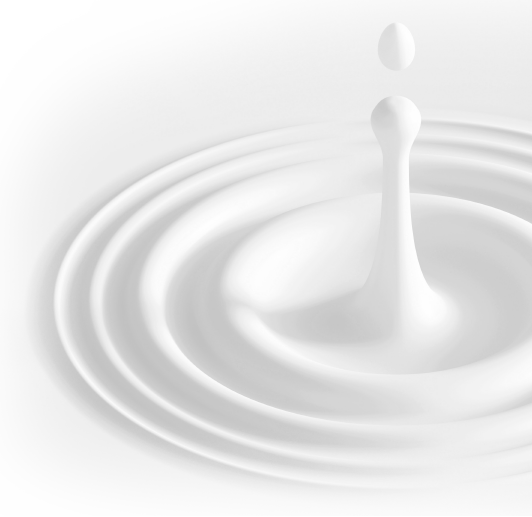During my PhD time at RUB in the group of Prof. Dr. Kristina Tschulik, I have developed a brand new way to measure how fast ions move at various temperatures and solvent viscosities [1]. By using only tens of microliters of ion solution, plus some tiny but helpful nanoparticles as the 'magical dust', we are now able to see how actively the ions are "dancing and moving" in the solution.
Of course, chemists don't describe the speed of a dissolved ion by how fast they are "dancing and moving". A better term for that is the 'diffusion coefficient' of the ion. This parameter is especially important in the pharmaceutical field, in which the delivery of drugs and their diffusion in the cells determines the drug effectiveness[2,3]. In fundamental chemistry, the diffusion coefficient of a reactant species plays a dominating role on the rate of many chemical reactions [4]. That is, even if the kinetics of a reaction might be intrinsically fast, a slow diffusion of reactant(s) can be a limiting factor and the reaction has to wait until 'snail'-like reactants finally collide and react. Thus, gaining insights of how fast a species can diffuse in the medium enables us to predict how fast a reaction can occur.
Danger: High voltage
Of course, different methods have been developed to help find out the diffusion coefficient of chemical species. For example, a costly one employs nuclear magnetic resonance [5], another technique detects the diffusion of molecules that exhibit laser-induced fluorescence [6]. Electrochemists too have been developing their method to determine the diffusion coefficient of a dissolved species. Such approach measures how much reactant species can react on a micro electrode of well-defined shape over certain time; this flux of the reactant carries information about the diffusion of the species and thus the diffusional coefficient can be calculated. The drawback of this traditional method is that, in order to drive the electrochemical reaction of some 'stubborn' compound on the electrode, high electrical potential has to be applied. This high electric potential can even break the solvent molecules (usually water) before the compound under analysis (analyte) can react, rendering the technique useless.
With a little help from nano friends
In our new method, we added an indicator nanoparticle to the solution of water and analyte (ion molecule); a micro electrode is also placed into it (Fig. 1 a). Then we applied a voltage that is lower than required to make the ion react directly with the electrode, but it is high enough to make the ion react with the nanoparticle at the electrode. Finally "the magic" happens: The nanoparticle collides with the electrode and remains, electrified, and ready to react, at the electrode surface; the ion of interest is floating in solution and slowly diffuses towards the electrified nanoparticle; once it gets nearby it, the ion reacts with the nanoparticle and a current is recorded (Fig. 1 b). The time needed for the ions to fully react with a known size of nanoparticle depends on the ion diffusion coefficient which can then be conveniently derived from the recorded electric current duration of the whole process.
The main advantage of this methodology is that one can choose an analyte-nanoparticle pair that requires relatively low electric potential to have an electrochemical reaction. For example, in our demonstration we utilised silver nanoparticles as indicators for chloride ions (our analytes of interest). That's because silver chloride formation is highly thermodynamically favourable, and thus chloride requires only low electrochemical driving force to react with silver nanoparticle. In this way we also avoid that the water molecules (solvent) are destroyed by the electrical potential before the desired reaction can occur.
This newly developed technique opens up the opportunity of finding out diffusion coefficient of species that are difficult to react on common electrode materials; one can now run the measurement by reacting the analyte with indicator nanoparticles, which come in great variety.
References
[1] E.N. Saw, N. Blanc, K. Kanokkanchana, K. Tschulik, Electrochimica Acta 282 (2018) 317-323
[2] S.M. Upadrashta, B.O. Häglund, L.-O. Sundelöf, Journal of Pharmaceutical Sciences 82 (1993) 1094-1098
[3] C.G. Pitt, A.L. Andrady, Y.T. Bao, N.K.P. Samuel, in: P.I. Lee, W.R. Good (Eds.), Controlled-release technology: Pharmaceutical applications / Ping I. Lee, editor, William R. Good, editor, American Chemical Society, Washington, D.C., 1987, pp. 49-70
[4] L.F. A.J. Bard, Electrochemical Methods (Chapter 9). (Chapter 9), 2nd ed., Wiley, New York, 2001.[5] E.O. Stejskal, J.E. Tanner, The Journal of chemical physics 42 (1965) 288-292
[6] C. Culbertson, Talanta 56 (2002) 365-373
----------------------------------------------------------------------------------
About the author




